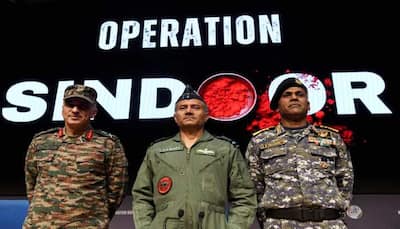New Delhi: When the dust settled after Operation Sindoor, one question echoed across defence circles: how did India mobilise its military might so quickly and in such coordinated fashion? The answer lies not in chance, but in a series of war games and strategic foresight.
Between April 18 and 21, just days before tensions erupted following the Pahalgam terror attack, India’s armed forces were engaged in Exercise Haldi Ghati – a tri-services communication drill designed to test and perfect interoperability between the Army, Navy and Air Force. There was a singular goal of the exercise – ensure that all three forces could communicate with each other seamlessly, no matter the situation.
At the same time, out in the Arabian Sea, the Indian Navy was executing Exercise Tropex – its theatre-level operational readiness drill involving nearly all major warships. This massive show of force was not just for training, it turned out to be a crucial asset in the weeks that followed.
The April 22 Pahalgam attack, which claimed 26 civilian lives, triggered immediate action from India’s top defence brass. Led by Chief of Defence Staff General Anil Chauhan, the Department of Military Affairs wasted no time. What had been simulated days earlier was now being applied to real-world deployment. The trial runs during Haldi Ghati had paid off. The forces had already rehearsed how to ‘speak the same language’ in battlefield conditions.
In the critical two-week window between the terror attack and India’s precision strikes on May 7, inter-service communication channels were tested, refined and fully activated. Simultaneously, Joint Air Defence Centres were established along the India-Pakistan border, pooling together weapon systems and command nodes from all three services. This allowed the military to build a unified air defence shield, which played a pivotal role in neutralising Pakistan’s drone incursions on May 7, 8 and 9.
Real-time clarity became another force multiplier. Thanks to integrated communications, commanders at defence headquarters in Delhi had a live and unbroken view of battlefield developments, capability that shaped strategic responses during the operation.
Meanwhile, the Indian Navy’s presence in the Arabian Sea, bolstered by Tropex, had an immediate impact on Pakistan’s posture. India’s forward-deployed warships covered key zones, forcing the Pakistan Navy to withdraw and station its assets closer to the Makran coast, effectively neutralising any threat from the sea.
By the time Operation Sindoor was executed, India’s war machine was not only activated, it was already running at full tempo. Exercises Haldi Ghati and Tropex were not just drills; they were blueprints for real-time dominance, implemented just in time.
Stay informed on all the , real-time updates, and follow all the important headlines in and on Zee News.








